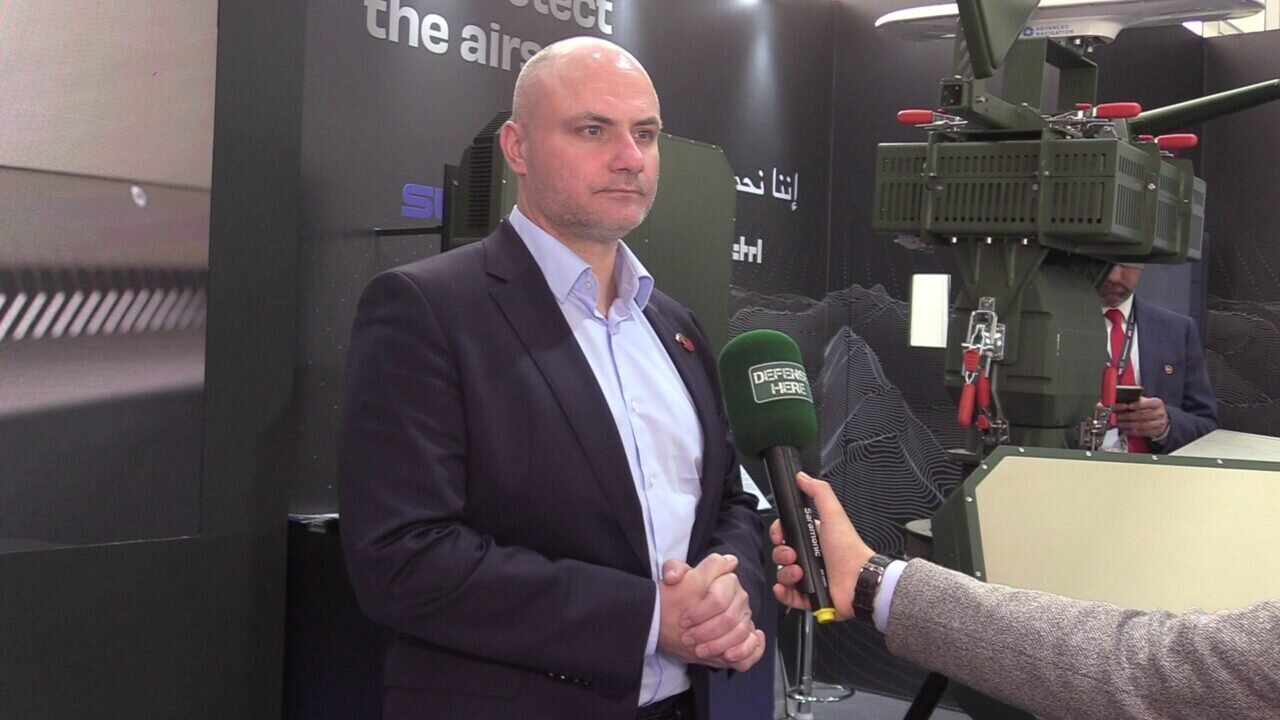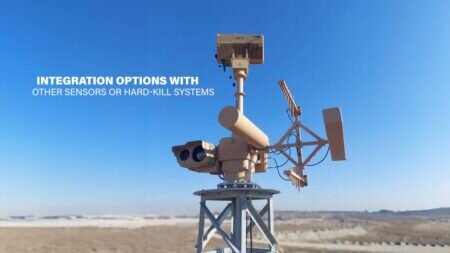Poland based defense company Advanced Protection Systems (APS) has showcased its “fully-automated” anti-drone radar system and newest radar against microdrones.
DefenseHere interviewed Radosław Piesiewicz, Chief Operating Officer (COO) of APS at the World Defense Show in Riyadh, Saudi Arabia.
Piesiewicz said it was their second participation in Riyadh fair and they brought their counter-UAV systems, “the technology which has proved itself on the battlefront in Ukraine” which “are used also by NATO militaries” to the exhibition.
Piesiewicz, explaining how their anti-drone system SKYctrl works, said:
“This one is a portable version which has proven itself in Ukraine. What you see here is a version with radars to detect track and classify drones and also soft kill electronic warfare based on jammers. It's a complete system to detect, track, classify and neutralize drones. What you see here behind us is the newest version of our radar, the ULTRA, which has more or less compared to our advanced radar, double the distance, double the potential to detect and track low small slow targets.”
He emphasized the fully automated nature of the system and stated their company’s motto as “to make a sophisticated technology as easy to operate as possible so that the operating person can focus on the task and not on the complexity of detecting drones.”
According to Piesiewicz the range of their anti-UAV system depends on the radar used and their system is effective against even the smallest drones:
“How many kilometers depends on which type of radar use. But with this one, you cover up to three kilometers with the bigger ones, up to six or even eight kilometers for very small drones. Class one, micro drones. To put it in perspective, size of a DJI Phantom or Inspire.”
Lastly, Piesiewicz stressed their commitment to Saudi Arabia’s “Vision 2030” and APS’ aim for futher collaboration with Saudi defense industry:
“For us, it's not just about selling our products. Of course, the products are proven. They are ready to be sold. But we want to go beyond. We want to build new partnerships. We want to build local capacity. We want to transfer know-how and knowledge because it's not just about sophisticated technology selling. What we want to see is that our technology is used in the proper way, that there is local capacity to use that, and that we directly contribute to the Vision 2030 and we are ready to transfer know-how, knowledge, localize production even, so that the threats with drones can be responded in the best possible way, not just today, not just tomorrow, but for the years to come.”


